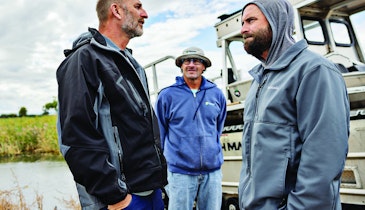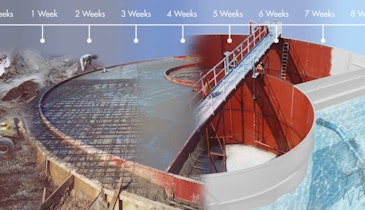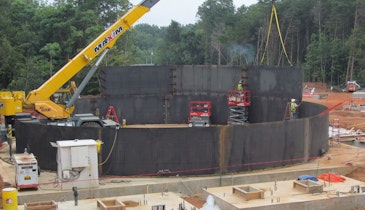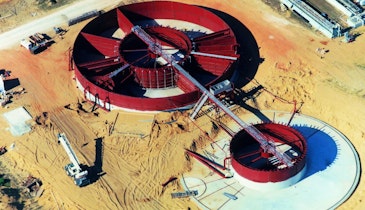
The Marlborough, Massachusetts, Easterly Wastewater Treatment Facility, was faced with an extremely stringent total phosphorus (TP) permit limit of 0.1 mg/L (60-day rolling average, April through October), as well as an aging facility that needed significant upgrades.
Originally constructed in the early 1970s, the plant is one of two facilities serving the Marlborough area. The facility’s influent is mainly commercial and residential. It also treats a small stream from an on-site composting station.
The treated effluent discharges into a small tributary leading to the Hop Brook, and ultimately into the Concord River. The facility has a design capacity of 5.5 mgd with a high hydraulic peaking factor of 4:1. It features primary clarification, as well as two-stage aeration with intermediate and final clarifiers, followed by chlorination/dechlorination. Sludge is dewatered prior to being sent to composting. The two-stage aeration system was originally designed to remove biochemical oxygen demand in the first stage and achieve nitrification in the second stage.
A cost-effective TP removal solution
The City of Marlborough and its engineer CDM Smith selected the BioMag system from Evoqua Water Technologies to meet the new TP permit limit without filters or a tertiary treatment. The system was incorporated in the second-stage aeration process that still performs nitrification. This enabled the facility to meet its low TP limit within the existing tankage and footprint. Because it does not require new tankage or intermediate pumping stations for a tertiary TP removal process, the BioMag system is highly cost-effective from both a long-term maintenance and an initial capital cost perspective.
Additional improvements included replacing the headworks, sparged turbines in aeration basins and centrifuges for sludge dewatering.
How it works
The Marlborough facility was able to meet its low TP limit by adding ferric chloride, for chemical precipitation of phosphorus, in the first and second aeration stages, which resulted in lower coagulant usage. Additionally, magnetite (fine particles of iron ore) was introduced in the second stage as a densification agent to ballast the mixed liquor suspended solids, delivering enhanced settling and clarification performance. Magnetite ballast is continuously recovered from the waste activated sludge stream for reuse in the system. Implementing the BioMag system in the second-stage aeration enabled the facility to reliably enhance the particulate solids (e.g. phosphorus precipitates, particulate/colloidal solids) removal in the final clarifiers under a wide range of inlet fluctuations, including hydraulic surges. Effluent quality limits are met with existing tankage. Effluent filters or tertiary treatment is not needed.
Consistent TP reduction
The BioMag system had a successful startup and came online in January 2015. The system began consistently meeting the TP target of 0.1 mg/L after the chemical solids inventory was established. Effluent TP concentrations have averaged 0.06 mg/L and effluent TSS concentrations have averaged 1.8 mg/L. Additionally, the second-stage aeration continues to fully nitrify as originally designed.
Contact biomag@evoqua.com to learn how the BioMag system can help you reduce phosphorus.





